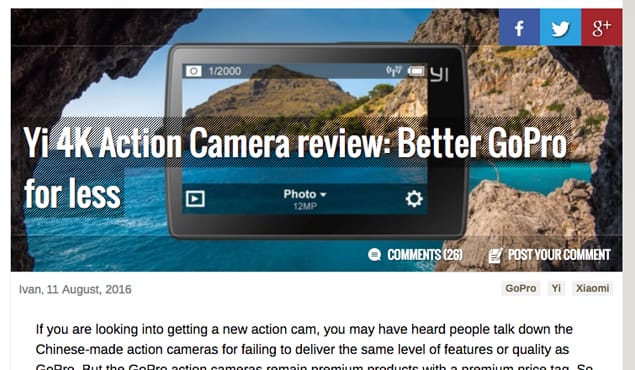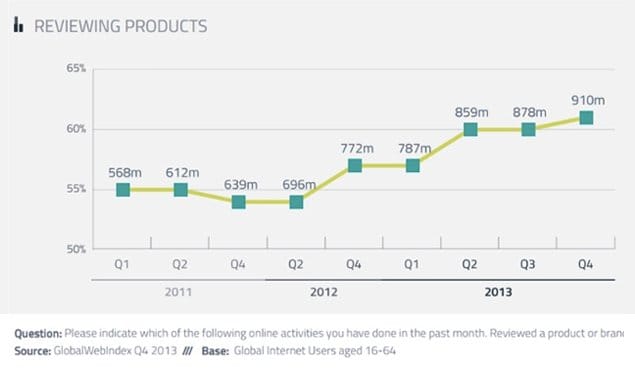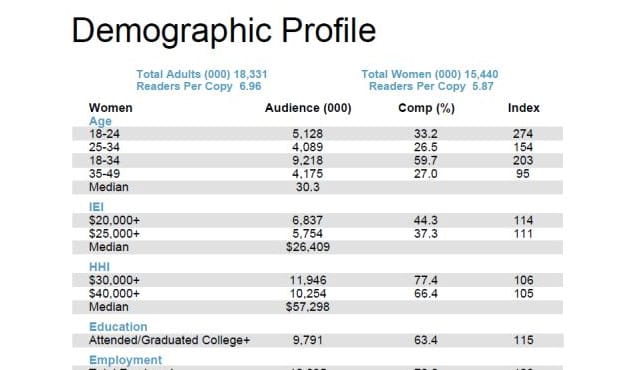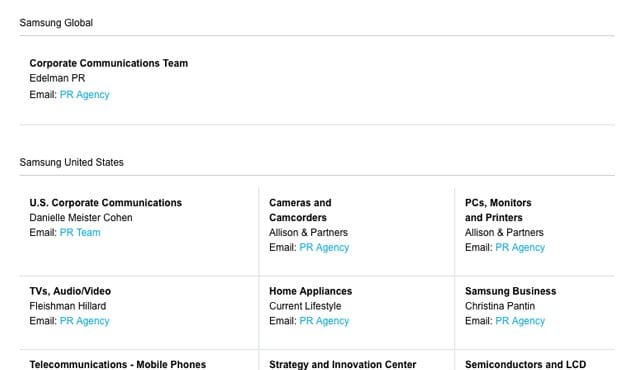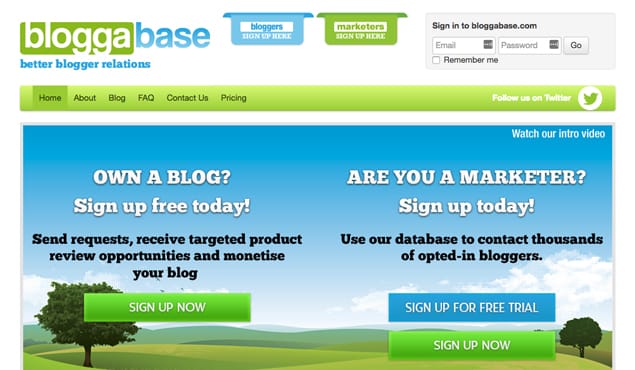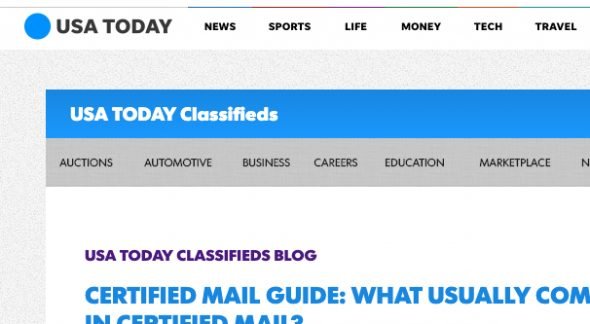Free stuff! Wahoo! This is so much better than buying things! It’s like you’re a famous rockstar that never has to pay off the tab, right? It’s like you’ve subverted the whole idea of capitalism by creating a blog, talking about products on your blog, and therefore getting all those products for free.
Can this dream be a reality? Yes, anything is possible.
However, you’ll quickly learn that “free” stuff typically equates to a lot of work, and that free stuff sometimes has to be returned, and that you’ll actually need to be quite productive in order to get any of that free stuff.
I don’t mean to burst your bubble — you can absolutely run a blog and get free stuff for it.
I’m here to tell you how to do just that in six distinct but related ways. Unless you’re actually a famous rockstar (or some other celebrity) you will have to do a number of things to start raking in free products.
Before we get into those six steps I want to run two key aspects of the blogging and product world by you.
Reviews
The first is that this article will focus on reviewing products in order to get them for free. You can gain free products by blogging about them in one other main way — sponsorship — but that usually implies you’ve been bought out by the company, and are therefore blogging about their goods.
That’s a perfectly fine way to conduct your blog, but for most people it won’t work. Product reviews are the best way to get a wide gamut of free products, as a sponsorship will limit you to one company (not to mention that it’s harder to get sponsored than it is to get a free product here and there).
The steps below will detail the process of asking for products with the intention of reviewing them. Yes, they will be shipped to you for free.
Returns
This one might sting a bit. You may be able to get products for free, but you won’t always be able to keep them. I know possession is nine-tenths of the law, but you might have to give that awesome review sample back.
Before you begin to weep, remember that you have received and been able to use said product for free. As in, shipped to your doorstep for weeks, months, or years of use. You probably got as much out of the product (or more) than most paying customers.
Know that this agreement is typically between the reviewer and the company. If you work out a deal where you get the keep the product, then it is yours. Just don’t be presumptive and assume you’ll get to keep it, because most of the time you won’t. Ask them what their standard policy is, then think about what your standard policy is, and come to an agreement.
The one thing you have to be careful about is requiring a company to give you the product, without returning it, in order to write a review. That borders on payment for a review (in the form of the product), and has to be disclosed as such by FTC law in the U.S. Similar standards apply to other countries.
You need to be clear with your audience, the supplier, and yourself about how you want to move forward with product reviews, and you’ll always have to state that you received the product for free if you did.
The six ways to get these products are outlined below.
1. Build Up Your Name, Traffic, and Authority in a Niche
The first step down the road to free products for review is to get your name out there. This is the same starting place if you want to create any blog that has recognition and power in an industry, so it makes sense for product-happy folk to start here as well.
This step will take the most time and dedication because it’s really about building your blog as a brand.
Let’s break down each of the above steps into chunks.
Build Your Name
This may be obvious, but the name you put on your blog is the one you’ll want to be known for. This can be your real name or an alias, but whatever it is, you’ll need to use it continually in your niche.
This requires you to have some expertise (or a very strong desire to learn) in a given niche. Start there, then produce articles in that niche on your blog.
Once you’ve published a number of articles and start to get some readers, branch out into guest posting. This will extend your name farther into the field. It’s not easy, but necessary if you want to build your name.
Build Your Traffic
Growth is measured by a number of things today — for a blogger, growth is measured primarily by traffic. How many people are visiting your website daily? How many of your articles get read? What is the bounce rate? Do people click on your ads (if you have them)?
All of these are necessary for future steps in getting free products. Building your traffic will help you in every way imaginable.
The “how to” of building traffic is quite complex — in a nutshell it entails high quality content, constant social outreach, and frequency. That, and a hearty dose of search engine optimization research to make your website known.
Build Your Authority
In today’s blogging world authority is seen as one of the primary factors. If you’re a trusted expert on a given topic people will flock to your website. Of course that means people need to see your website, so refer to the above step.
Authority not only shows your community that you are capable of providing them with the best information, but it will assure companies you are legitimate. You will be worthy of sending products to, simply because you’re an authority in a niche.
2. Social Media Presence
Step two is another big element of today’s networking world: Social media.
Any blogger worth their salt has picked a network (or a few) and consistently uses it. Think of it as another blog post, though much smaller. You can choose any network that is used by members of your niche — be it Instagram, Twitter, Facebook, Pinterest, etc. — but make sure that you have a strong presence on one. Your followers (and companies) need to be able to find and talk to you through that channel in addition to your blog.
Social media is also another aspect of traffic. While it doesn’t constitute website traffic, high numbers on social media is required today to get recognized by companies.
If you have less than 100 followers on any platform it will be obvious you haven’t put time or resources to grow that opportunity.
It’s not imperative to do this for free products to review, but it helps a lot. Companies will pick someone with 10,000 Instagram followers over someone who has none if their blogs are roughly the same every single time.
Keep in mind that companies want you to feature their products — it’s free exposure. Or, exposure at the cost of a product sample. If you have tons of followers on multiple social media networks a brand will view that as an increased opportunity to expose their product, and you will do exactly that.
Connect with PR and Brands
The second major element of participating in a social network is to actually interact with PR companies and brands you will, at some point, want samples from. Follow them, like their posts, comment frequently, and get yourself on the map.
That way when you send an email (see step No.5) they will have an idea of who you are. It will prove you are a voice in their industry, and they will be much more likely to work with you.
3. Professional Media Kit
Once you’ve conducted the first two steps for some time you’ll begin to see a steady flow of traffic and users on your site. This will boost your spirits, but it also means it’s about time to start connecting to companies.
One thing you’ll want before you connect is a professional media kit, also called a press media kit (or just press kit). This is a PDF packet of information that includes who you are, what your blog is about, how much traffic and social influence you have, what your goals are, and why you think you’d be a good fit for a brand.
The press kit is created in order to get sponsorships, free products, or more interaction with companies in a realistic, professional way.
Basically, it’s exactly what you need to show you’re serious.
Is it required to get free products? No, not always. At some bigger companies it may be, but you can ride by with a detailed email pitch or something similar.
However, the press kit is an excellent way of surmising your entire blog’s purpose, so I recommend creating one once you have some traction.
How to do this is important — I leave you with this excellent resource.
4. Review Products You Already Have
One of the best ways you can show a company how good you’ll be at reviewing their product is by already having reviewed some products. You can start with the products you already own.
That way, when you go to email them (the next step, I promise), you can provide a very helpful URL to show them how good of a reviewer you are.
The product you review should be in the niche you plan to review. For instance, deciding to review an iPhone 7 when you have a blog about bee-keeping is, well, stupid.
Why are you talking about the phone? Why do bee-keeping readers care about it? It could possibly be about the phone’s ability to record and track the bees, but that’s a stretch.
Instead, review the latest gloves and bee-suit you got. Or review some honey. Or practically anything to do with bee-keeping.
If you write in a niche you probably have specific products that work in that niche, whatever it may be. Use the products you have to start your review section, then send that off in your emails and press kits.
5. Email the Company
Finally. The real, solid, hard step that will get you the free products you want.
If you’ve done the above four steps (or even just a couple of them) it’s time to email the companies you want free products from. Remember, these products are for review purposes to help the growth of your blog, not just for your enjoyment. I do recommend enjoying them, though — that’s part of the fun.
Email is easy and professional. Include who you are, your blog, examples of reviews, a press kit if you have one (hard data in the text of the email if you don’t), and a specific product request.
Typically it’s best to email with a product in mind, so you’re not just asking for blank permission to request any gear.
If you want a specific model, tell them what it is in your email. This way their marketing or PR person can make an informed decision.
Call ‘Em Up
If you’re adverse to email, or want to have a more personal touch, consider calling them on the phone. I know — it’s a crazy idea. Trust me, though, companies get spammy emails all the time. Yours won’t be spammy (right?!), but a phone call assures that one human will speak to another, and typically humans are nice to each other, especially when both want something from the other one.
I typically go the calling route first (if I can find a phone number) and make a direct connection with the company.
Who Do You Email?
This one can be tough. It’s not always easy to find the right email address online. My advice? Call whatever number you can find, even if it’s a generic 1-800 number, speak to a live person, and ask to be connected with their media and PR department.
Those are typically the people that deal with product requests, and technically you are media and doing promotion for that company (if they send it to you).
If the company has a posted email address, like [email protected], email that address and ask for specifics.
You will get forwarded to the right people, and should have your products soon.
Make sure you check back in after a week or so because media and PR people are known to have way too much on their plate.
6. Use a Connecting Website or Agency
If email or calling is way too scary for you, consider using a connecting website or agency. There are a handful of these for different products niches. They typically connect bloggers to companies that want their products reviewed.
You can do a search for these types of companies. First, check out two of the biggest:
- Blogga Base
- Izea
Typically a company like this wants bloggers and companies to have a positive, mutually beneficial relationship. They provide a helpful service that cuts down significantly on your search time, which means they can cost money.
While this is a good way to go if you’re trying to get hundreds of products to review very quickly, you can more easily (and cheaply) email companies yourself if you have the entrepreneurial mentality.
Get Free
With the above six steps you should be able to not only grow a formidable blog, but receive and review free products frequently. Hopefully your reviews will become noted in your industry, read by thousands, and anticipated every time a new product comes out.
That’s what you’re going for — a buzz about you, your process, and what you think about a product.
Remember that a company may just say no, or ignore you. If this is the case, continue growing your brand. Remember to start with smaller companies; they are much more willing to send products out. Like anything, work your way up the ladder to free product review success.
 ContentPowered.com
ContentPowered.com




